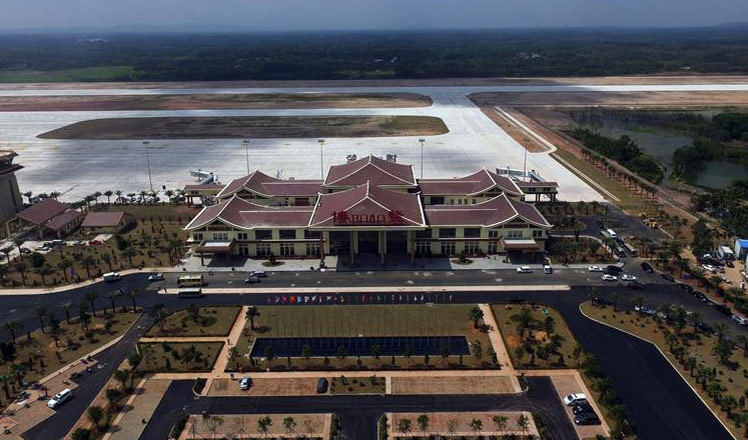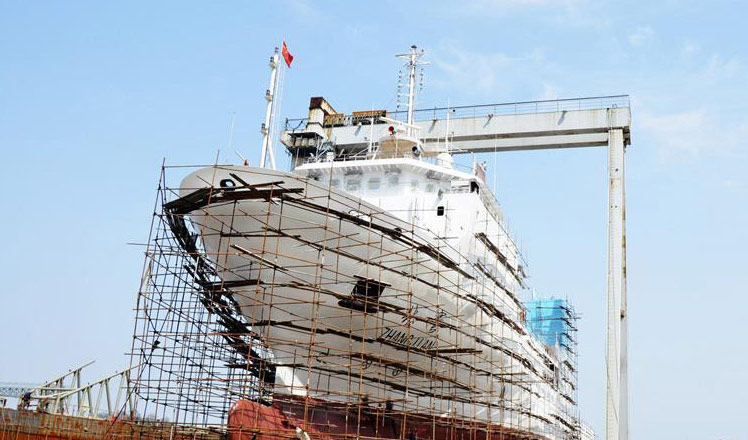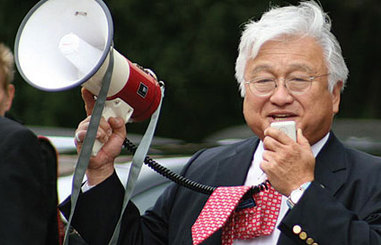Peruvian business leaders see trade with China growing
Updated: 2016-03-07 04:50
By MAO PENGFEI in Mexico City(China Daily Latin America)
|
||||||||
Trade between Peru and China has grown fourfold since diplomatic relations were established in 1971, and Peruvian business leaders say they are confident it will keep growing.
Trade was spurred by the bilateral free trade agreement (FTA) signed in 2009 and the strengthening of ties with a Comprehensive Strategic Partnership in 2013. Two-way trade is expected to total more than $16 billion for 2015.
China has overtaken the United States to become the South American country's largest trading partner, and while it is the leading buyer of Peruvian commodities, such as copper, iron and fishmeal, it is also purchasing nontraditional exports, especially agro-industrial products.
“China is a new topic for us,” said Julio Varilias, CEO of the Gandules Agro-Export Corporation. “Since the signing and ratification of the FTA, China has become an important market for Peruvian exports, because of its size and large number of consumers. And China’s domestic policies are changing.”
Gandules, named after a type of pea, is recognized as a leader by the most important agro-industrial companies in Peru and supplies more than 40 countries. The privately owned company has been in the agribusiness for many years, and has an extensive production chain, including green pigeon peas, jalapenos, peppers, chilies, asparagus, sweet corn, beets, pineapples and table grapes.
How did the company gain access to the Chinese market?
“We have been attending various trade shows in China, with the intention of seeking out a market,” said Varilias. “China is a very competitive country, producing and processing many foods, so to enter the Chinese market, you have to be very competitive.”
The company is still expanding its market there, especially for fruits and peppers (brown pepper and chili), and Varilias recommends that Latin American countries “really look to the Asian-Pacific nations, with China being a priority destination,” for their exports.
“Now we only export processed peppers and table grapes. But the national food industry is inspired to (export) other types of fruit, such as mangoes, citrus, avocado and asparagus,” said Varilias. “Everyone can succeed. Peruvian products are renowned for their high quality and taste, so I think that’s something Peru has to exploit a lot.”
Were there difficulties in accessing the Chinese market?
“I think the requirements are quite similar in all countries ... food is very sensitive, very delicate; each country looks after its citizens and is therefore very demanding,” Varilias said.
Peru’s National Agrarian Health Service (Senasa) obtained phytosanitary permits from China’s General Administration of Quality Supervision, Inspection and Quarantine (AQSIQ) through direct discussions for shipments of food.
Interest in buying Peru’s agricultural and seafood products is evident from Chinese delegations that regularly attend Peru’s food-trade show Expoalimentaria, organized annually by the Association of Exporters (Adex).
But Varilias said there is a financial problem. “There is no Chinese commercial bank in Peru to facilitate trade, so you have to go through foreign bank intermediaries that have direct transactions with China,” Varilias said. “The subsidiary of the Industrial and Commercial Bank of China (ICBC) in Lima is doing notable work, but it still hasn’t gotten the approval of the National Superintendency of Banking and Insurance (SBS) to operate as a commercial bank.”
Peru’s imports from China are increasing annually, as demonstrated in store windows featuring everything from computers and communications technology to textiles and clothing, televisions, footwear, motor vehicles and many other items.
Executive Director Oscar Zevallos of Grupo Deltron, the country’s largest importers of Chinese goods, said: “Our relationship with China dates back several years (and) we have a 25-year history in the national market”.
“Initially, we imported (electronic) components from the US, but as import volume grew, we began a direct relationship with China. We have direct Chinese suppliers, like Lenovo,” said Zevallos.
Deltron imports laptops, tablets, accessories, motherboards, smartphones and other components from China. The company has its own brand, Advance, which is made in China with special requirements, and receives an average of 10 shipping containers weekly.
Zevallos said business diversified last year. “We are bringing drones, smart-watches and scooters from China, and we are increasing other product lines, electronic toys,” Zevallos said.
China is the main source of world production for goods, including high-tech products, he said. And thanks to fluid bilateral trade, underpinned by the FTA and the strategic partnership, tariffs are gradually coming down. In addition, items his company handles are exempt from tariffs, and as shipping volumes increase, freight rates decrease, it has become easier to send and receive goods.
“Take the Lenovo brand, for example. We placed about 5,000 computers a month in the Peruvian market last year,” said Zevallos.
The company has an office in the Special Economic Zone (SEZ) of Shenzhen, in South China’s Guangdong province, which makes it much easier to do business without intermediaries.
Deltron, he said, recently had about 400,000 500-page coloring books printed in China, as requested by the Ministry of Education for an online course in English taught at public schools. The company used Chinese publisher Best & Well, which completed the task in 45 days, explained Zevallos. It showed the publisher’s ability to stick to a schedule and provide high print quality at a favorable price.
Trade with China presents no problems, he said, because it is a member of the World Trade Organization (WTO), and China’s efforts to expand its free trade have generated new opportunities.
Varilias and Zevallos agree that, with China being a strategic partner for Peru and Latin America in general, the region should make the most of Chinese technology to promote innovation and productivity, boost trade and investment to strengthen competitiveness, and join regional chains by partnering with China in projects and joint ventures.
- Former US First Lady Nancy Reagan dies at 94
- Solar Impulse 2 back in the air after battery upgrade
- Jailed 'El Chapo' desperate to be extradited
- S. Korea, US to launch formal talks on THAAD
- Kim Jong Un says to further strengthen nuclear weapons in quality
- Spanish Princess testifies in tax fraud trial

 Boao airport all set for upcoming Asian forum
Boao airport all set for upcoming Asian forum
 Snapshots from the 'two sessions'
Snapshots from the 'two sessions'
 Turn of virtual reality cameras at two sessions
Turn of virtual reality cameras at two sessions
 China's home-made expedition mothership 'Zhang Qian' to be launched in March
China's home-made expedition mothership 'Zhang Qian' to be launched in March
 Top 10 countries boosting China's tourist inflows
Top 10 countries boosting China's tourist inflows
 Airplane restaurant to open in Wuhan
Airplane restaurant to open in Wuhan
 World premiums at Geneva Motor Show
World premiums at Geneva Motor Show
 China's top 10 tech startups
China's top 10 tech startups
Most Viewed
Editor's Picks

|
|
|

|
|
|
Today's Top News
What ends Jeb Bush's White House hopes
Investigation for Nicolas's campaign
Will US-ASEAN meeting be good for region?
Accentuate the positive in Sino-US relations
Dangerous games on peninsula will have no winner
National Art Museum showing 400 puppets in new exhibition
Finest Chinese porcelains expected to fetch over $28 million
Monkey portraits by Chinese ink painting masters
US Weekly

|

|







